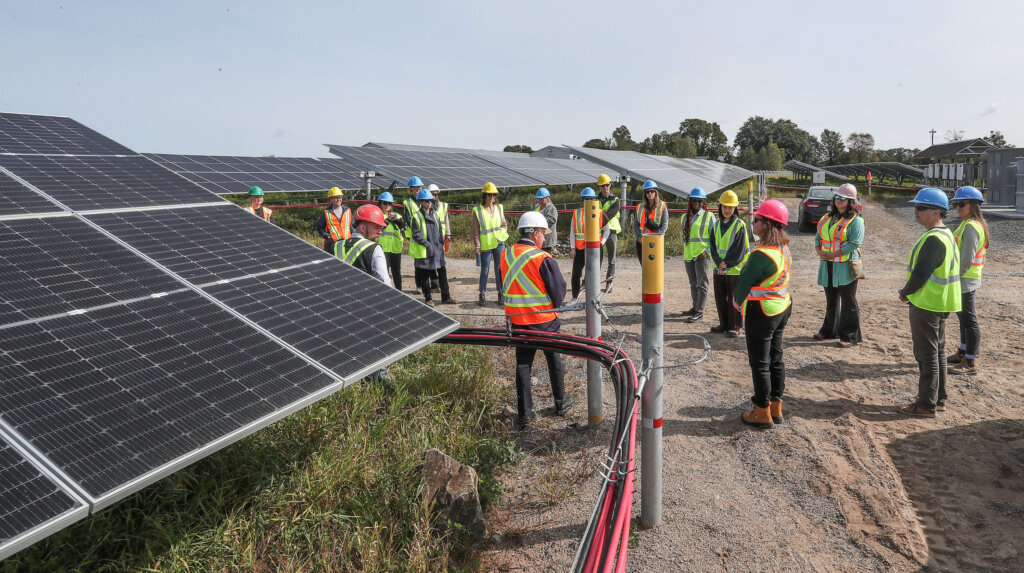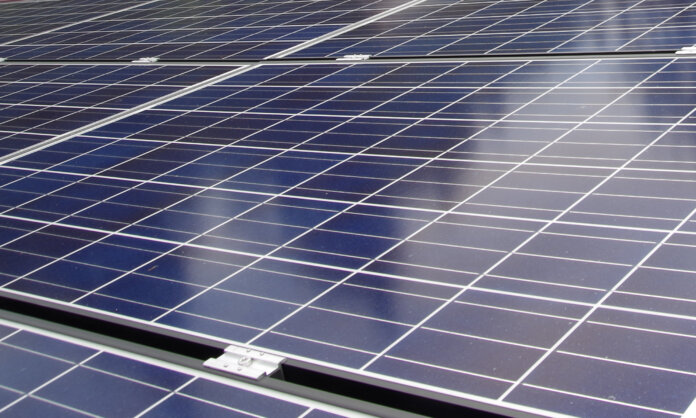The Nova Scotia government has announced a community solar program.
But how is it different from the solar panels you already see on homes?
By Sean Kelly, Climate Story Network
HALIFAX/EAST HANTS: Stroll around most communities these days, and you’ll see more and more solar panels on buildings, converting sunlight directly into electricity through photovoltaic cells.
Solar energy is renewable and reduces your home’s carbon emissions. It can help offset your energy costs and be a hedge against rising electricity prices.
There are even SolarHomes rebates from Efficiency Nova Scotia to help make this clean electricity more affordable to install. Solar makes sense – and cents.
But what if your home’s roof can’t support solar panels? Perhaps your property doesn’t get enough sunlight? Maybe the upfront costs of installation, even with rebates, is just too much? Or you are a renter, and the roof isn’t yours to add panels to?
ADVERTISEMENT:
Your share of the sun
Community solar could be the light at the end of your power bill, adding renewable power to your electricity mix.
A community solar “garden” is a centrally located and operated solar array where the energy is widely distributed to residents, some of whom may not actually live close to the panels.
Also called shared solar, community solar is a way for multiple subscribers to buy a share of a solar project and receive credit on their electricity bill for their portion of the power produced.
A solar garden requires an area large enough to install numerous panels: this could be on the rooftop of an industrial or institutional building, or on land with ground-mounted arrays. (Putting solar gardens on the ground does require careful considerations of land use, including agricultural needs.)
But whether on a roof or on the ground, shared solar is a pathway for more people to virtually access clean energy from the sun.
ADVERTISEMENT:

A different kind of harvest
Like any farm, there are different ways to own and operate the solar facility. It could be utility-owned, where an entity like Nova Scotia Power owns the solar garden but distributes the benefits to homeowners or neighbourhoods.
Alternately, it could be community-owned, where a municipality, First Nation, non-profit, university, college, business, or community organization pays for and operates the solar garden.
Or it could be third-party owned, where a business or co-operative owns and operates the solar array.
There are also different ways to distribute the harvested power. Residents could lease a panel or panels in the array and reap the benefits of the power they produce. There could be many subscribers in a power purchase agreement, where you pay a predetermined rate for energy produced by the solar array. And then there is outright panel ownership, where someone buys a panel within the solar garden; they get the power produced by their panels, but the entire array is still owned by one body.
ADVERTISEMENT:
Bright days for Nova Scotian solar
The Province of Nova Scotia has announced a new Community Solar Program aimed at helping non-profits, municipalities, First Nations, and businesses set up solar gardens. They would then sell this renewable electricity to subscribers who aren’t able — for one of the reasons listed above — to install solar panels where they live.
The program will also contribute to the province’s climate goals. Nova Scotia has plans to reach 80 per cent renewable energy and to move away from coal by 2030; however, our grid still includes around 60 per cent of energy generated by the burning of fossil fuels, mainly coal.
“Not everyone has the ability to install their own solar panels,” said Tory Rushton, the Minister of Natural Resources and Renewables, about the launch of the program. “This creates the opportunity to buy solar energy from a community provider instead.”
New arrays under the Community Solar Program are expected to be up and running by spring 2026, at which point people can subscribe to them at a slightly lower power rate.
ADVERTISEMENT:
Participants will get to decide how much of their electricity usage comes from solar, choosing to offset some of their electricity usage, or all of it. According to the announced guidelines for the program, participants will be able to increase, decrease, or cancel their subscription at any time, and there’s no penalty for changing the subscription.
The province plans to invest just over $5 million over the next year to help with the capital costs of building the community solar gardens. Each solar garden is allowed to produce up to 10 megawatts of power; one megawatt of solar can power around 130 homes for a year.
Subscribers will get a solar energy credit of $0.02 per kilowatt hour on their power bill for energy generated by their subscription.
“We’re thrilled to see the launch of the Community Solar Program,” said David Bruschett, the Chair of Solar Nova Scotia, a volunteer-run non-profit organization that works to support a strong local solar industry and more renewable energy.
Bruschett is confident this new program will help grow the solar industry in the province.
“It will also contribute to the ambitious shared goal of transitioning away from coal-based electricity in Nova Scotia by 2030.”
The Climate Story Network is an initiative of Climate Focus, a non-profit organization dedicated to covering stories about community-driven climate solutions.






















